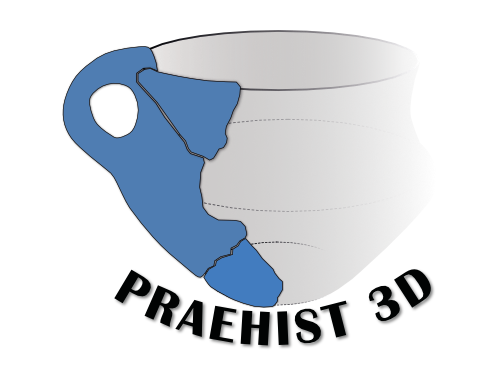Reproduction is a major issue in museums, especially without jeopardizing the originals.
In the past, casts of sculptures and finds were made for this purpose. Everyone knows the large collections of casts of antiquities in Berlin and Munich with their impressive collections of statues.
Many casts can also be seen in museums, but often without the visitor noticing them. For example, some fossils in natural history museums are replicas (Brachiosaurus head and Tyrannosaurus in Berlin …)
Today, no contact methods need to be used to produce replicas. These tasks can be performed by 3D scanning and 3D printing. Non-contact 3D scans capture the original in a gentle yet highly detailed way. This data can then be used for digital presentation or prepared for 3D printing.




Ideally, the scans are already “watertight” grids that can be used one-to-one in the printer.
In some cases, however, it is not possible to capture individual areas. Due to fixed wall mounting, for example. Or additions need to be made. This can be done directly on the digital twin.
After data preparation, the choice of manufacturing technology begins. FDM/FFF is a fast process with medium detail reproduction, which mainly enables robust and inexpensive prints. The most common materials used are PLA (plastic made from corn starch), PETG or ABS. However, the structure of plastic filaments leads to a noticeable and visible creasing on the surface of the print. This can be sanded or filled or compensated for by a high print resolution (which increases the printing time and price). Supports are also required on overhangs, which may also need to be reworked.
The SLS process fuses plastic powder layer by layer from a powder bed built up layer by layer. The use of supports is not necessary. Very smooth surfaces can be produced by fine-tuning the laser. Although the unmelted powder can be reused for the next print, the process can be relatively expensive. This is due to the high machine costs.
As the entire build space must always be filled up to the height of the object, the individual part costs can be significantly reduced by filling the build space with additional objects or copies (nesting).
In my opinion, resin printing achieves the finest details and best surfaces. Here, a resin is hardened using a strong light source (laser or UV LED). The object is suspended upside down over a resin tank and immersed layer by layer, with only the required areas being exposed to light.
Resolutions of a few microns can be easily achieved in this way.
The five replicas of a cuneiform clay cone shown here were produced from resin using the SLA process.




The 3D scan is based on a 50-year-old cast of an original. It did not need to be reworked as we were able to capture the object from all directions.
After printing in light gray resin, the print was freed from supports and cleaned in an isopropanol bath. The blank was then finally cured in a UV oven.
PU varnish adheres excellently to the resin surface, which is why I prefer it as a primer. After 24 hours, the paint is applied in layers to achieve a sand-colored tone. Various acrylic paints and washes are used for this.
The final step is to seal the surface with a super-matt varnish to protect the object against contact.
Unlike the original, the 3D prints are hollow and much lighter. However, various filling materials can solve this problem if desired.
Are you interested in 3D scans, prints, reconstructions, workshops or questions?
